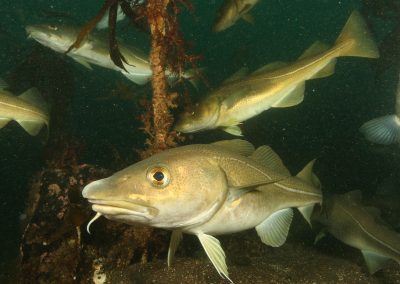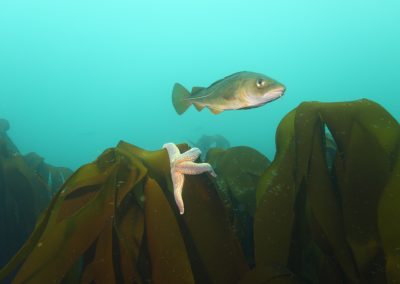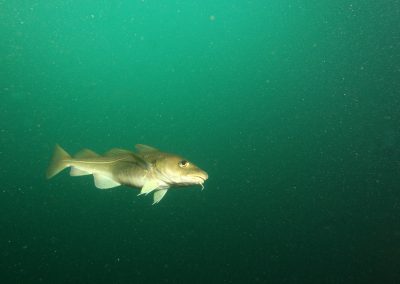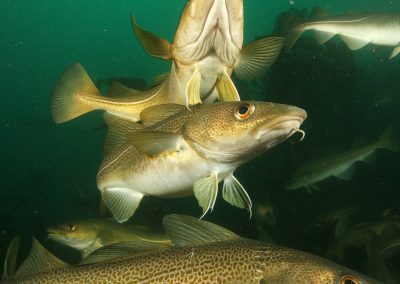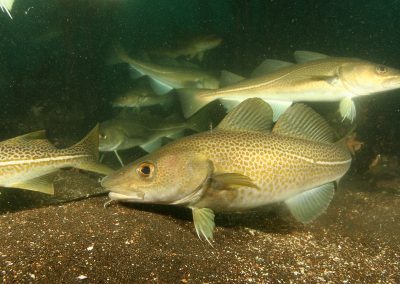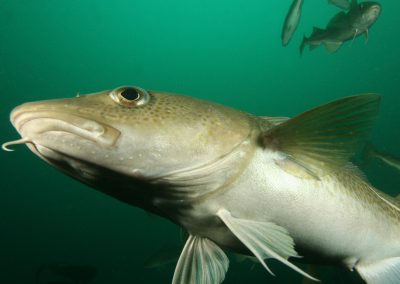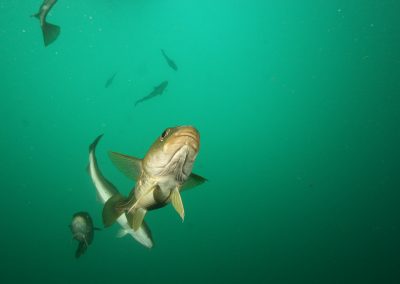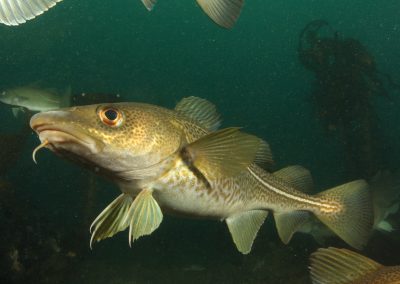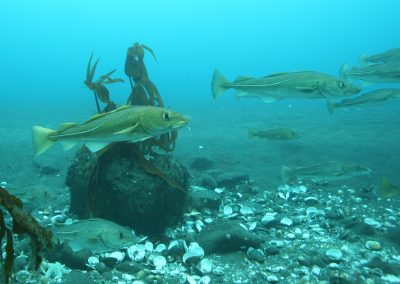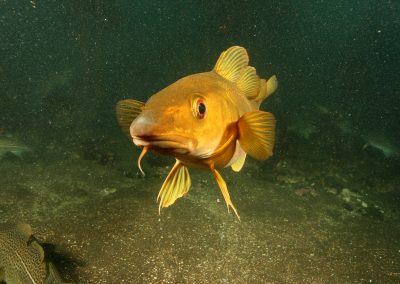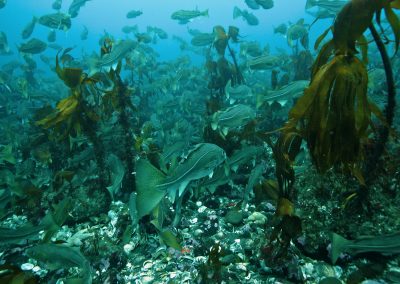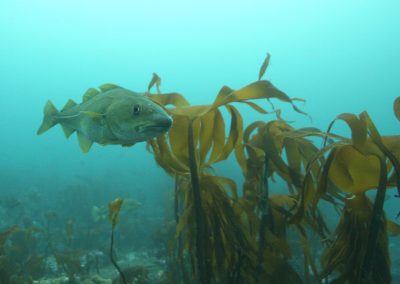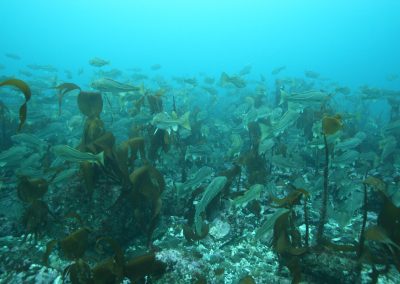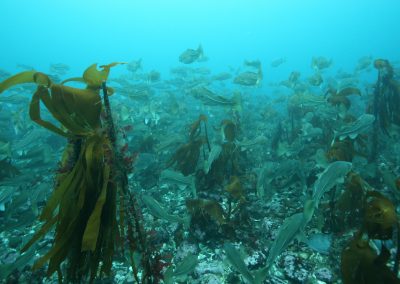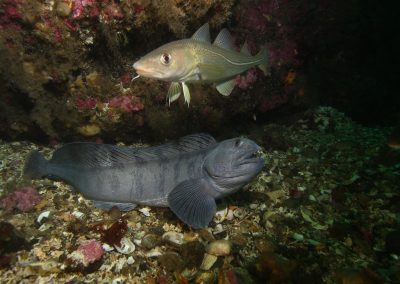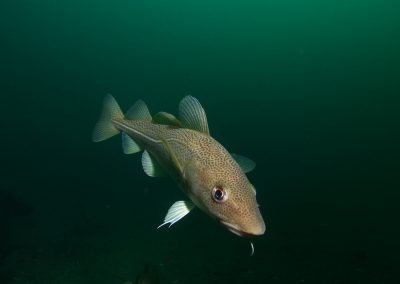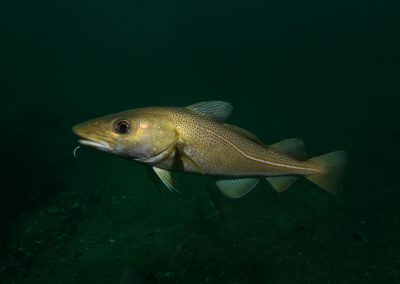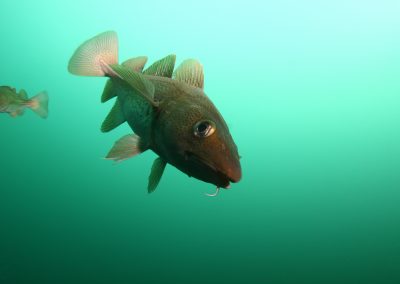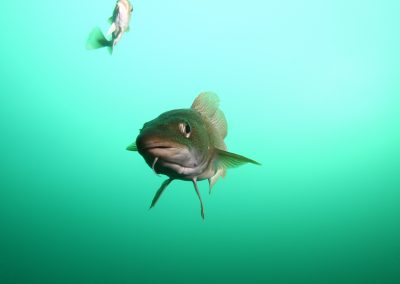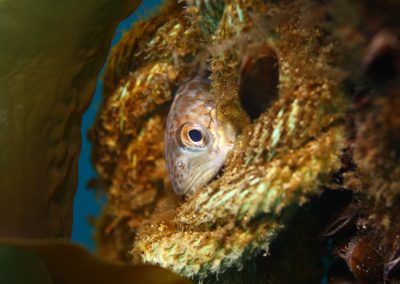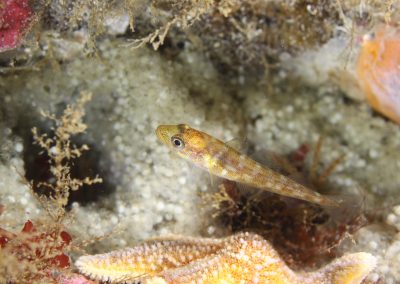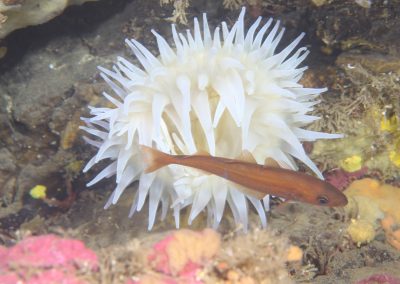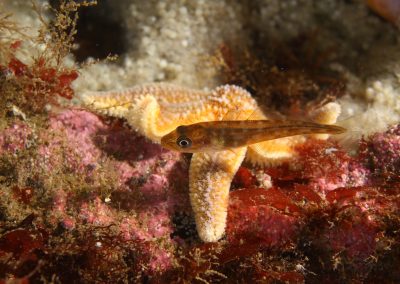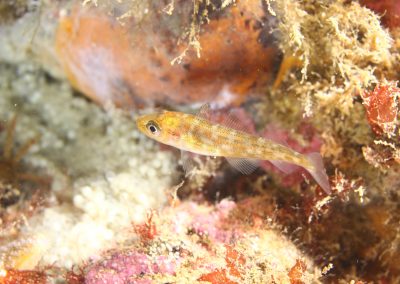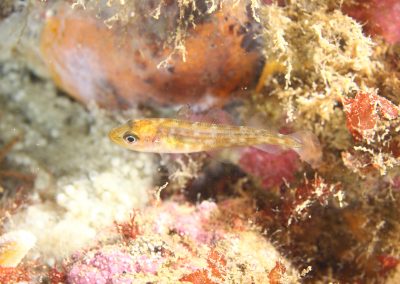Cod
Gadus morhua
The cod can grow quite large; the largest individual found was about 200 cm long. Common size in catches is much smaller, or in the range of 45 to 105 cm long in most fishing gear in Icelandic waters.
Distribution
Worldwide, the stock is distributed from Cape Cod in the North-western Atlantic, along the coast of Labrador, off southern Greenland, Iceland, Faroe Islands, south to the English Channel, in the North, Baltic and in the Barents Seas. The Icelandic cod stock mostly occurs on the Icelandic shelf.
Ecology
The cod spawns all around Iceland, but the largest and most important grounds are off the south-western coast. Spawning occurs in late winter when mature cod aggregate on the spawning grounds. In previous centuries, the main fishing season used to be along the south-west coast at that time, targeting the large spawning cod. After spawning the cod spreads over the continental shelf, but the highest abundance is on the main feeding grounds off the northwest and southeast coast where warm Atlantic waters meet cold Polar currents.
After spawning, eggs and larvae drift clockwise around Iceland with the ocean currents. The juveniles settle down to the bottom in August and spend most of the time hiding from menacing predators, mostly larger cod. The most important rearing rounds for the juveniles are in the colder waters northwest, north and east of Iceland. In general, they head for deeper waters as they grow and end up on the feeding grounds around maturity.
Fisheries
The cod has been one of the most important fishes in the North Atlantic for about thousand years. Cod is “the fish” in Iceland. It is by far the most important marine resource there. Its economic importance has only briefly been surpassed by herring in the 20th century and possibly Greenland shark in the 19th. The history of fisheries around Iceland has more or less been about cod.
Cod is caught all around Iceland and throughout the year, but fishing is still highest in the winter season on the spawning grounds and along the migration routes to the spawning grounds. During other seasons, the highest catches are on the main feeding grounds northwest and southeast of Iceland. It is mostly caught at depths of 100 – 250 m and ocean temperatures of 4 – 7 °C.
HÞV







